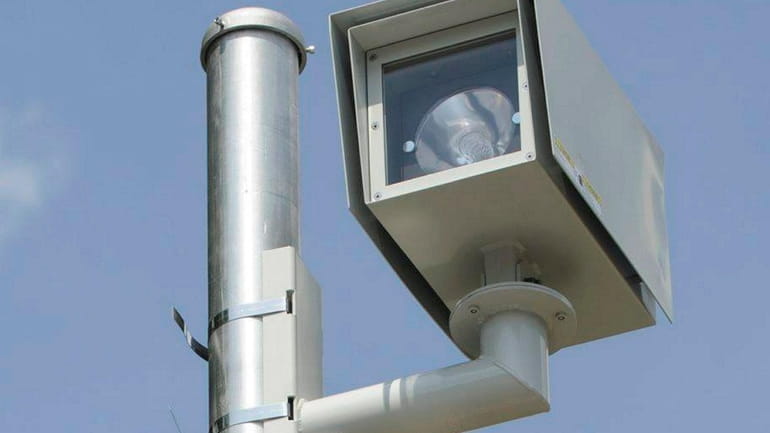City speed cameras to go around the clock

A speed camera clocks vehicles traveling southbound on Utopia Parkway in Queens in 2014. Credit: Charles Eckert
Slow down, or pay up.
Starting Monday, New York City's 2,000 automated speed cameras will begin operating 24/7 instead of just on weekdays during school hours.
Unlike moving violations issued by a police officer, speed camera tickets carry less of a penalty ($50), don't lead to any license points, and aren’t reported for insurance purposes.
The cameras, which are activated by radar and lasers, are triggered when the speed limit is exceeded by more than 10 mph, with the violation later verified by a city technician. The camera locations aren't publicly disclosed.
A violation notice is then sent by mail to the vehicle's registered owner. Receiving 15 or more violations within 12 months could necessitate taking a safety course or having your vehicle impounded. Late fees and interest accrue if you don't pay or dispute the ticket. And failing to take action within 30 days puts the vehicle in jeopardy for booting, towing or seizure.
The 2,000 or so cameras are in 750 zones citywide, within a quarter-radius of schools. In 2014, the program began under then-Gov. Andrew M. Cuomo and Mayor Bill de Blasio as a pilot with 20 such zones. Mayor Eric Adams' office said that speed cameras have been shown to reduce speeding by 72%.
Until now, under state law, the cameras could operate only on weekdays, between 6 a.m. and 10 p.m. But about 59% of traffic deaths occur outside of these times, Adams’ office said in a June 30 news release issued the week after Gov. Kathy Hochul signed legislation authorizing the cameras to be on 24/7.
The release said, "traffic violence and rampant speeding have skyrocketed nationwide during the COVID-19 pandemic, including in New York City — and 31% of on-street traffic fatalities now occur in camera zones during hours when the city’s speed cameras could not previously operate, inhibiting the city’s ability to identify drivers and take appropriate action."
A pedestrian struck by a vehicle being driven at 30 mph is twice as likely to die as a pedestrian struck at 25 mph, according to a 2013 article in the public health journal Accident Analysis & Prevention.
Gilgo-related search in Suffolk woods ... Urologist trial update ... Construction work zone safety ... Jericho fatal crash
Gilgo-related search in Suffolk woods ... Urologist trial update ... Construction work zone safety ... Jericho fatal crash

